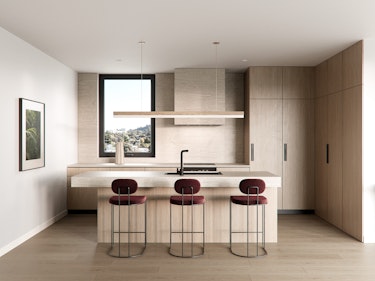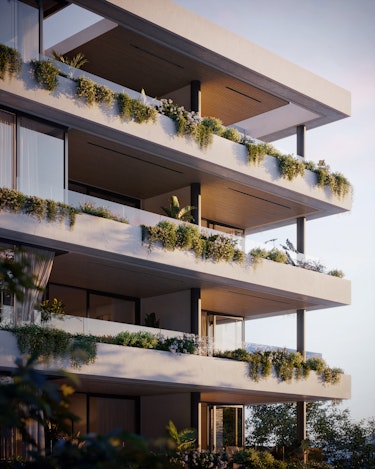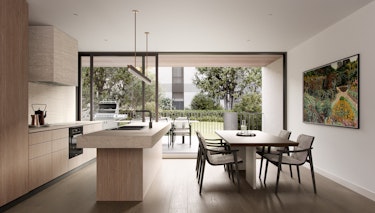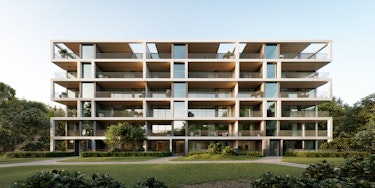Since it is central to your entire project, it will guide you in prioritizing your work and determining the flow of your ideas. Your project's main goal is to communicate this central concept in the most effective way possible. Architecture presentations are a tool to showcase your work. They serve as an introduction to your design process and methodology, as well as a summary and vision for the project. You communicate your design and show your artistic skills and talent as a designer.
Start with the foundation, follow the structure, and then move on to the skin and interiors. This is a crystal-clear process that you are already familiar with. Your skills as an architect in showcasing graphic documents or visual communication are very important to effectively present the architectural design solution to a particular audience or client.
This article will explore the elements that go into creating a successful architectural presentation, discussing; layout and structure, 3D architectural rendering, and where to look for inspiration. Giving you the knowledge and confidence to create a professional and creative result that communicates your work's heart and soul.

Dynamic Vision of the Project
The architectural presentation allows you to clearly demonstrate your vision for a building complex's façade. With street, aerial, bird's-eye, worm's-eye, and close-up views, you may demonstrate it from various perspectives by 3D architectural renderings. Your client will be able to examine the general geometry of the structures and appreciate the chosen finishing materials while looking at a photorealistic 3D model. The 3D architectural renderings function nicely as a preview of the final output in this scenario. Most importantly, viewers do not require any professional architectural training to comprehend such pictures.
Experimenting with Architectural Animations
Would you like to be innovative and maximize your modernity? This form of architectural visualization brings your design to life. Architectural animation including AR and VR allows your potential clients to have a prefixed flythrough over your project. Use 3D architectural animations for a unique, innovative approach and improve your business in various areas such as advertising, sales campaigns, marketing, planning, or possible error detection. Architectural animation provides customers with a real-time virtual experience by allowing them to walk in unbuilt properties.
Project Sizing for Estimation and Planning
Since building complexes are massive structures, it’s critical to let the investors fully appreciate their scale. With a 3D architecture presentation, you can do that effortlessly. For example, by showing your concept in a street view, you will give your audience a clear understanding of the size of the structures, as there will be people, cars, and other structures to relate it to. Precision input of dimensions makes drawings more colorful and exact, saving time that you otherwise spent drawing precise lines. With the new 3D architectural visualization capabilities, you can see views from various perspectives even before laying a single brick of the foundation. Customers can see and change the order of objects based on their size, available space, and other factors. The physical measurements of the things, as well as their distance from other elements, are clearly depicted in a 3D architectural rendering.
Promote your client’s sales
3D Architectural renderings represent the overall scheme of the project, that is meaningful to one or multiple stakeholders in the system. The 3D rendering professional chooses and develops a set of views that will enable the architecture to be more interactive, and understood by, all the stakeholders, and enable them to verify that the system will address their concerns. 3D Visualization or Architectural 3D Display is the best real estate advertising tool. Even before developing anything, the 3D rendering company has experience with architectural visualization that changes the creative energy of the project. In fact, clients consider 3D architectural rendering for building development and remodeling approval.
Get the Financial Juices Going
The 3D architectural presentations are to catch the attention of potential investors in a project. Investors in a particular real estate market would feel a lot better about putting their money into a company venture after seeing the designs through the property images of the place, thanks to 3D visualization. It also increases their interest in the project because it is one thing to put money into a project and ask for updates without feeling a personal commitment in its completion, and it is quite another to have a personal stake in its completion. The investors, on the other hand, would be carried up in the fever of wanting to convert the image into reality with the 3D architectural rendering.

With 3D visualizations, there are no unforeseen surprises
In business, surprises are not welcomed in architectural presentations. It doesn't matter the nature of surprise you get in business; you create plans based on the facts you have. A surprise would be a complication that is not necessarily welcomed. It is better not to be surprised, whether pleasantly or adversely, in order to avoid any complications. The chances of being surprised are low with 3D visualizations, and even if you do, 3D visualization still has an edge because you can readily tweak it to fit whatever turns up.
Adds realism to your design
Architectural presentations including traditional rendering processes would only be able to display sketches and plans in a two-dimensional form. However, real-life architectural designs work in three dimensions. Proper use of light and shadows gives your design a more realistic feel, as that is how our eyes perceive stuff. An outsider, such as a client, would find it difficult to understand the depth and position of the items, their various sizes, and how they are situated in relation to their surroundings if you don’t use shadows. We can tell which things are floating in the air and which are on the ground by looking at their shadows by 3D visualization.

Using 3D architectural presentations as a base, designers, contractors, and investors must adopt new and emerging methods and supply services to ensure growth, profit, and client retention. Businesses that deal with animation and 3D visualization in the construction industry frequently improve their performance by being more unique and innovative through services such as charter animations, 3D walk-throughs, medial, architectural visualization, the three-dimensional design of interior and exterior parts of structures and buildings, and so on.
